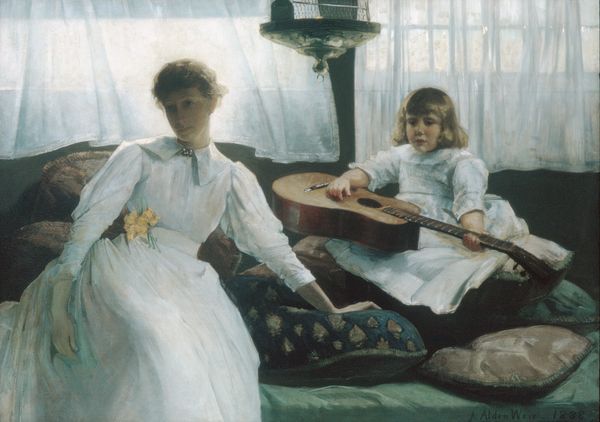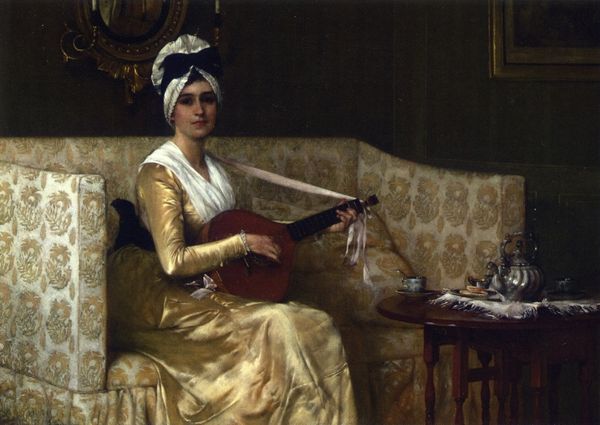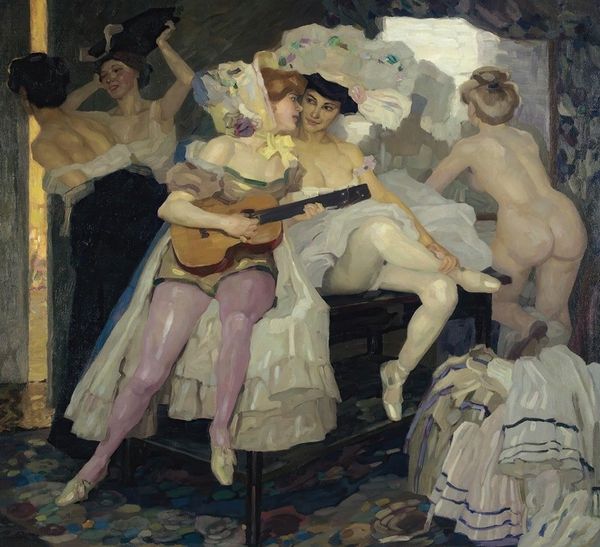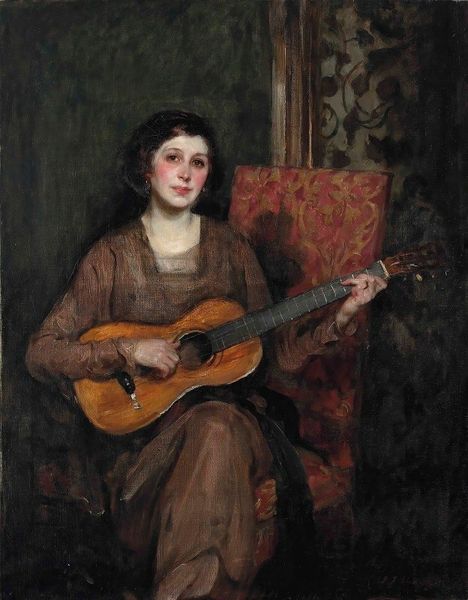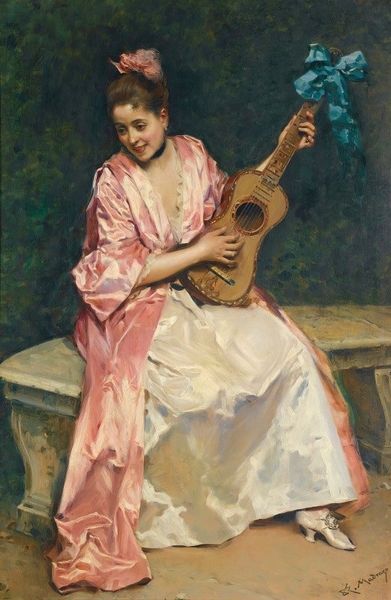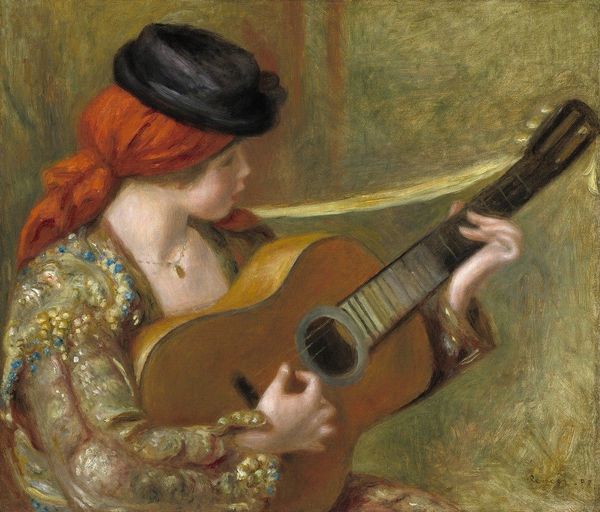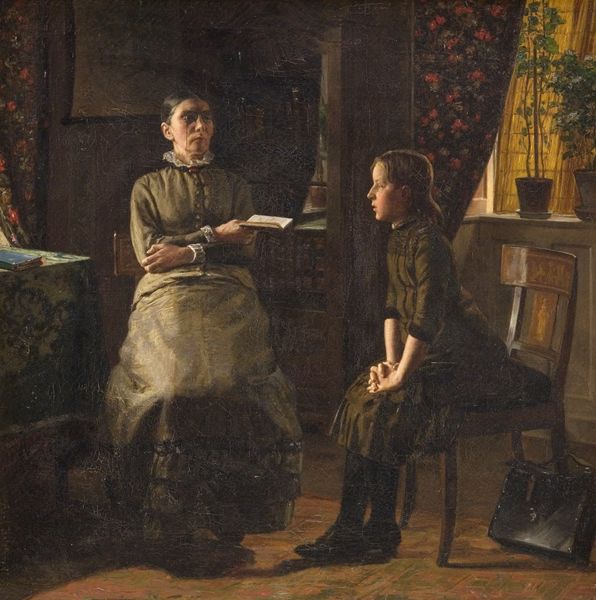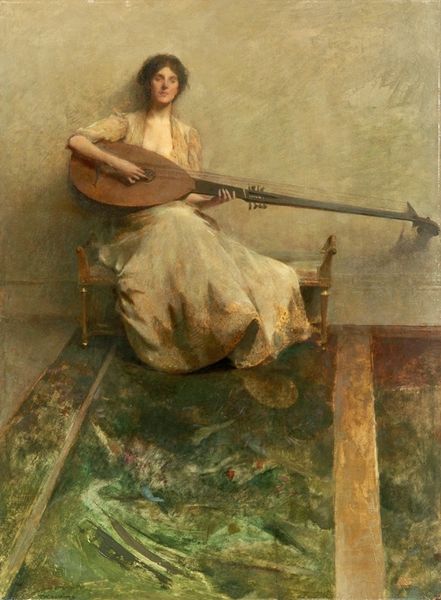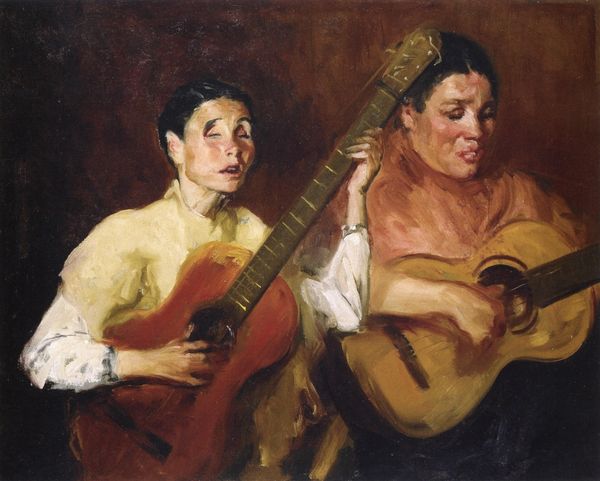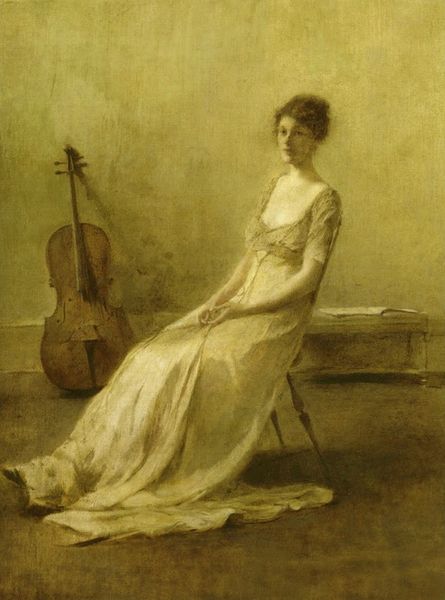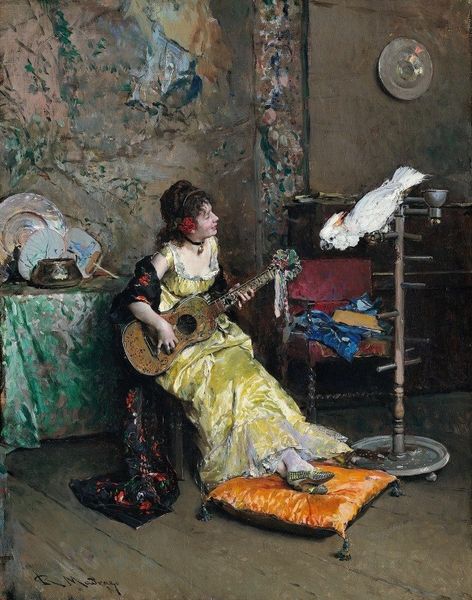
Copyright: Public Domain: Artvee
Curator: This is John White Alexander’s “Panel for Music Room” painted in 1894 using oil paints. It's a genre scene that incorporates elements of portraiture. What are your immediate thoughts? Editor: It evokes a sense of languid domesticity, a pause in the rhythm of daily life. There's a melancholic air, perhaps reflecting the limitations placed on women's roles during that era. Curator: I see what you mean, it's certainly not a boisterous, upbeat composition. Alexander was very involved in the Aesthetic Movement, an era that was more about beauty and pleasure than progress or production. Do you see any specific aesthetic signifiers at work? Editor: Absolutely. The muted tones and the flowing lines of their gowns hint at a rejection of Victorian rigidity, a move toward more fluid forms of expression both sartorially and emotionally. It reads almost as a tableau of privileged leisure, underscored by those impractical yet beautiful dresses. Curator: The gowns definitely dictate much of the symbolic expression. There’s a Pre-Raphaelite languor here, echoed by the way light falls and caresses the fabrics and figures, focusing on line, shape and design more than narrative, something key to aestheticism. They really are "art for art's sake" embodied. Editor: Right. The very title "Panel for Music Room" is telling—it emphasizes the decorative function. But within that aesthetic framework, are we seeing a commentary, however subtle, on female passivity, their confinement to the domestic sphere? It’s a lovely prison if it is, with a soothing soundtrack. Curator: Perhaps. Music, especially in the Victorian era, was itself symbolic. A woman playing music indicated accomplishment but also availability. Is one woman playing for the pleasure of the other, as a type of "social" offering? Or are they united, or trapped, in the aesthetic? Editor: That question of performance and being performed *for* really does hit at the ambivalent positions women occupied, and arguably, continue to navigate today. Curator: Exactly. These ambiguities make it so interesting. So much can be perceived through symbolic placement, posture, or gesture when we can understand it in cultural terms. Editor: Precisely. What starts as surface allure reveals deeper resonances when considered through historical and cultural lenses. The lasting questions this aesthetic performance provokes are especially resonant today.
Comments
No comments
Be the first to comment and join the conversation on the ultimate creative platform.
